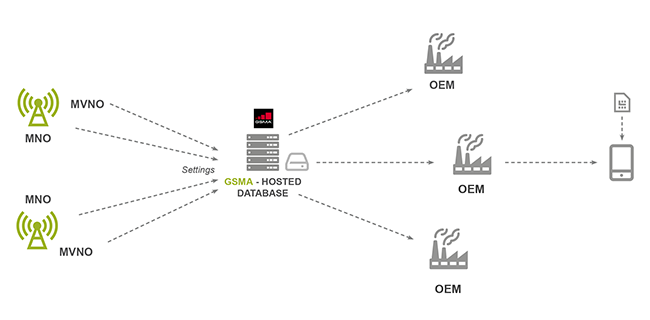
The increasing availability of high quality LTE (Long Term Evolution) networks brings the promise of much better technologies, and Voice over LTE and Voice over WiFi are just two of those. Unfortunately, if you’re someone that actually enjoys these technologies, you may be aware just how difficult it is to actually get them to work.
Why doesn’t VoLTE and VoWiFi just work?
In short, for your phone to access and utilise a carrier’s VoLTE or VoWiFi systems, it has to know quite a few settings. It isn’t just as simple as setting up an APN anymore, something which is mostly redundant because the carrier’s APNs are baked in to most modern phones these days.
There’s no centralised database of these settings and this makes it a bit harder to get your phone working on a carrier’s VoLTE or VoWiFi systems. The nature of these systems means that device makers and carriers have to collaborate to test and certify phones before these advanced networking features are available. In short, this means that unless you buy a phone from a carrier, you can almost guarantee that VoLTE and VoWiFi won’t work.
What’s GSMA doing?
The GMSA has taken note of this clunky process, and is now working with its partners to develop an open standard for delivering carrier features to more phones.
The GSMA’s wants to fix this by launching a “Centralised Device Settings Database.”
This online repository would be run by the GSMA, allowing carriers to upload universal device settings to enable these features on (theoretically, at least) any phone. When you insert a SIM card in a phone with support for this system, it will connect through an OEM system to the central device settings repository, and obtain the necessary settings to enable video calling, VoLTE, WiFi calling, and so on.
Will this work in Australia?
The short answer is no, not yet.
A number of OEMs and carriers are signing up overseas, including big names like Samsung and LG, Huawei and HTC, and carriers Vodafone, Verizon, AT&T and more. Notably, none of the Australian carriers are on board … yet.
Knowing how LTE certification is done by the carriers in Australia at the moment, though, there’s no guarantee that merely having the appropriate LTE-specific settings on your smartphone will actually allow it to work with your chosen carrier.
In Australia, at least, unless carriers have actually tested the device and confirmed that it works properly, and that important features like Emergency 000 dialing actually work, they won’t allow the phone to access these more advanced network features.
For popular handsets, this isn’t really an issue. Samsung’s Galaxy S8, for example, can be used on any of the three major carriers and VoLTE will work. VoWiFi works on Telstra (that I know of) and will probably work if it’s supported elsewhere. The carriers all sell this phone, and so even if you buy it outright or from overseas, it will work here without skipping a beat.
For less popular devices, or carrier exclusives, you can forget that level of compatibility. Google’s Pixel phones, for example, are only sold by Telstra (or outright). Vodafone and Optus don’t sell them, and as a result, don’t test them nor support them. Ultimately, this means Pixel phones won’t support VoLTE or VoWiFi on Optus or Vodafone unless those carriers choose to enable it.
Will this change?
Ultimately, it has to. VoLTE and VoWiFi are — today, at least — niche features. Most users don’t know about them, nor care. VoLTE is invisible to the user who’s not looking for it — superficially, all it does is make call setup times quicker.
However, it does more than that. It means your phone doesn’t need to drop to 3G to make a call, and given investment these days is in 4G coverage, there are plenty of areas you can get a reliable 4G signal and no 3G. Being able to make calls on 4G is important.
These features are almost becoming the new version of carrier lock-in, seen as exclusive features, and that shouldn’t be — these are standard networking capabilities that should, absent some compelling reason, be available to any handset which properly supports them. I should be able to use VoLTE on my Google Pixel regardless of the network I use.
Today I can’t. Tomorrow I’ll be able to, and so will you.
This is the kind of innovation that GSMA – as the trade association for the world’s mobile network operators — is working to facilitate. They’re not just about Mobile World Congress, you know.




